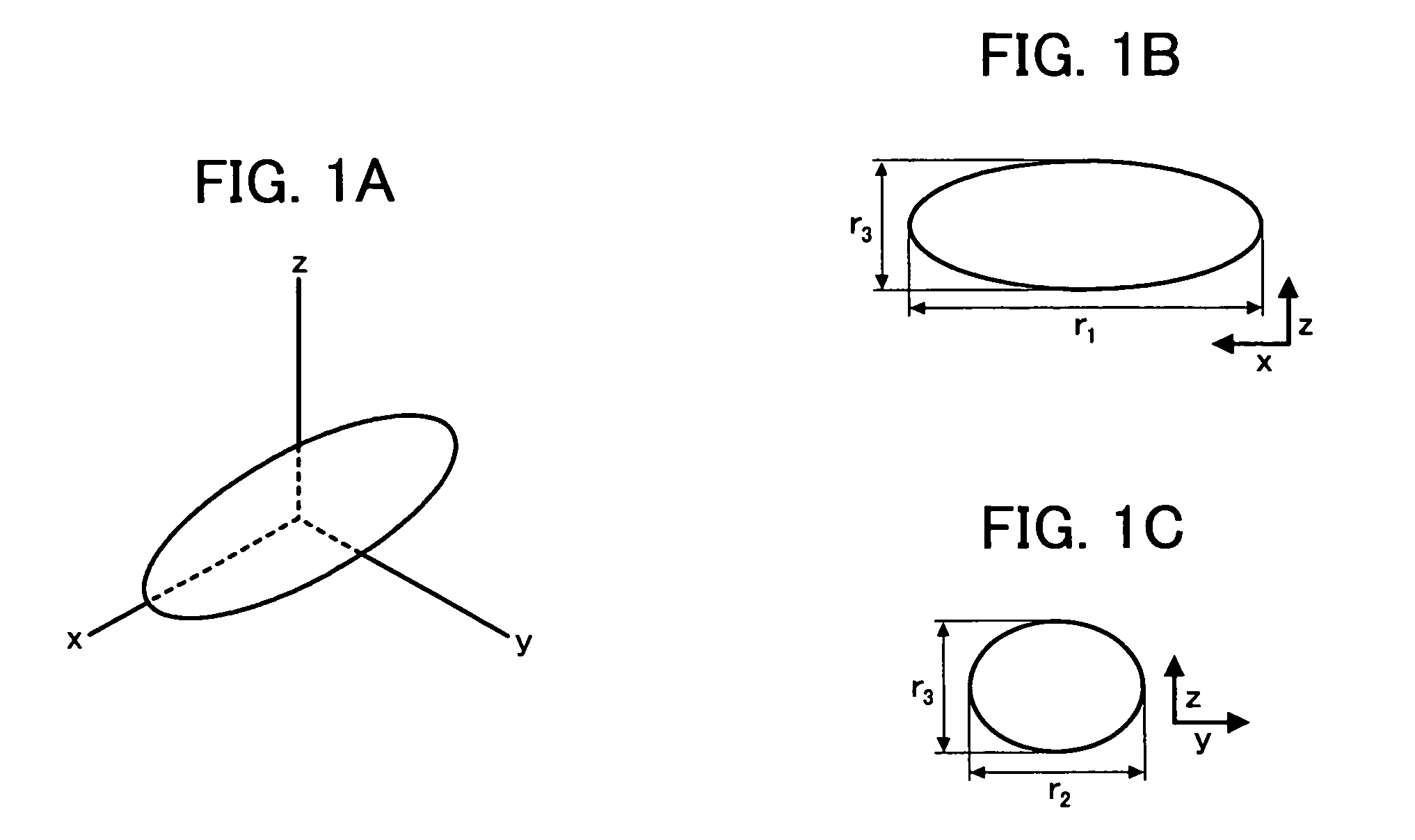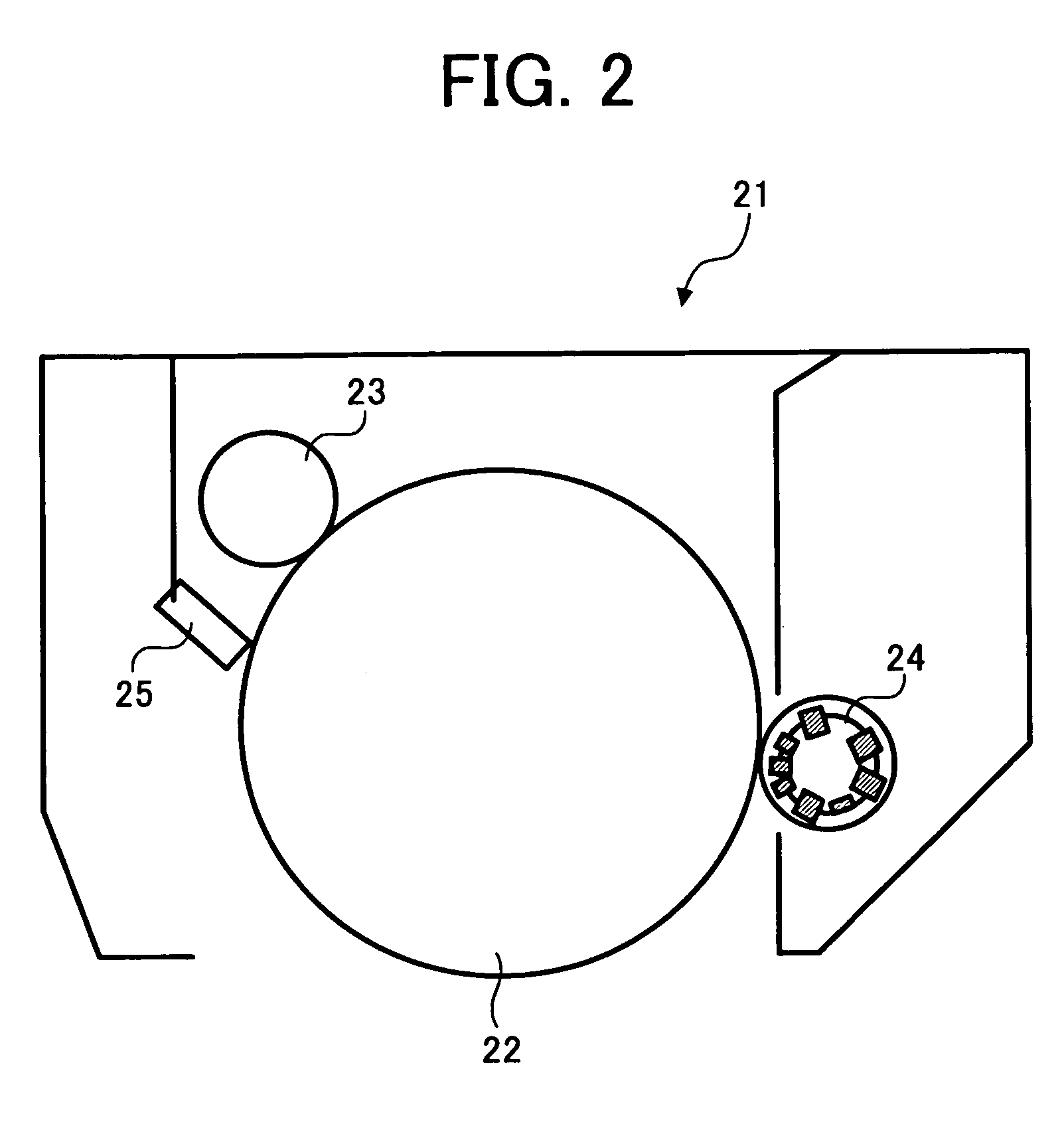Dry toner
a toner and dry technology, applied in the field of dry toner, can solve the problems of insufficient fixing, insufficient toner fused, hot offset, etc., and achieve the effects of high electric resistance, long life, and small particle diameter
- Summary
- Abstract
- Description
- Claims
- Application Information
AI Technical Summary
Benefits of technology
Problems solved by technology
Method used
Image
Examples
example 1
(Synthesis of Toner Binder)
[0168]The following components were contained in a reaction container having a condenser, a stirrer and a nitrogen introducing tube and reacted for 8 hours at 230° C. under normal pressure.
[0169]
Adduct of bisphenol A with 2 moles of724ethylene oxideIsophthalic acid276Dibutyl tin oxide2
[0170]Then the reaction was further continued for 5 hours under a reduced pressure of from 10 to 15 mmHg. Subsequent to cooling down to 160° C., 32 parts of phthalic anhydride were added thereto to perform a reaction for 2 hours. Subsequent to cooling down to 80° C., 188 parts of isophorone diisocyanate were added thereto in ethyl acetate to react for 2 hours. Thus, a prepolymer (1) containing an isocyanate group was prepared. Then 267 parts of the prepolymer (1) and 14 parts of isophorone diamine were reacted for 2 hours at 50° C. Thus, a urea-modified polyester (1) was prepared. The urea-modified polyester (1) had a weight average molecular weight of 64000.
[0171]Similarly, ...
example 2
(Synthesis of Toner Binder)
[0176]The following components were subjected to polycondensation in the same way as in Example 1.
[0177]
Adduct of bisphenol A with 2 moles of334ethylene oxideAdduct of bisphenol A with 2 moles of334propylene oxideIsophthalic acid274Trimellitic acid anhydride20
[0178]Then 154 parts of isophoron diisocyanate were added and reacted to obtain a prepolymer (2). Further, 213 parts of the prepolymer (2), 9.5 parts of isophoron diamine and 0.5 parts of dibutyl amine were reacted in the same way as in Example 1 and thus a urea-modified polyester (2) having a weight average molecular weight of 79000 was obtained. Two hundred parts of the urea-modified polyester (2) and 800 parts of the unmodified polyester (a) were dissolved and mixed in 2000 parts of a mixture solvent of ethyl acetate / methyl ethyl ketone (1 / 1) and thus an ethyl acetate solution of the toner binder (2) was obtained. A portion of the solution was dried under a reduced pressure to isolate the toner bin...
example 3
(Synthesis of Toner Binder)
[0183]Thirty parts of the urea-modified polyester (1) and 970 parts of the unmodified polyester (a) were dissolved and mixed in 2000 parts of a mixture solvent of ethyl acetate / methyl ethyl ketone (1 / 1) and thus an ethyl acetate / methyl ethyl ketone solution of a toner binder (3) was obtained. A portion of the solution was dried under a reduced pressure to isolate the toner binder (3). The toner binder (3) had a peak molecular weight of 5000, a Tg of 62° C. and an acid value of 10 mgKOH / g.
(Manufacturing of Toner)
[0184]A toner (3) according to the present invention was obtained in the same manner as in Example 2 except that the toner binder (2) was replaced by the toner binder (3) and the addition amount of carbon black was changed to 8 parts. The mother toner particles had a volume average particle diameter (Dv) of 5.7 μm, a number average particle diameter (Dp) of 4.8 μm and Dv / Dp of 1.19. The results are shown in Table 2.
PUM
| Property | Measurement | Unit |
|---|---|---|
| volume average particle diameter | aaaaa | aaaaa |
| Tg | aaaaa | aaaaa |
| acid value | aaaaa | aaaaa |
Abstract
Description
Claims
Application Information
 Login to View More
Login to View More - R&D
- Intellectual Property
- Life Sciences
- Materials
- Tech Scout
- Unparalleled Data Quality
- Higher Quality Content
- 60% Fewer Hallucinations
Browse by: Latest US Patents, China's latest patents, Technical Efficacy Thesaurus, Application Domain, Technology Topic, Popular Technical Reports.
© 2025 PatSnap. All rights reserved.Legal|Privacy policy|Modern Slavery Act Transparency Statement|Sitemap|About US| Contact US: help@patsnap.com



